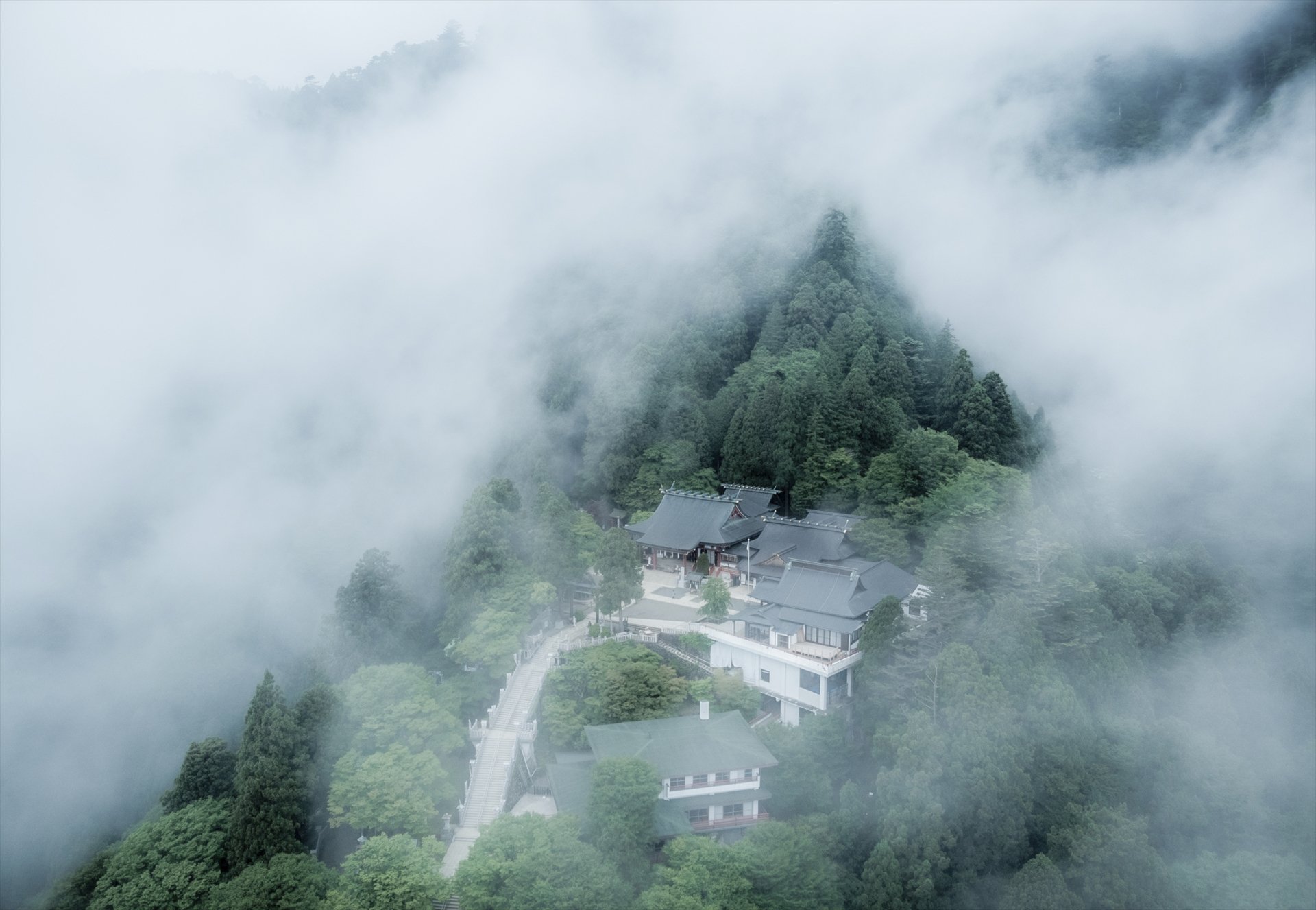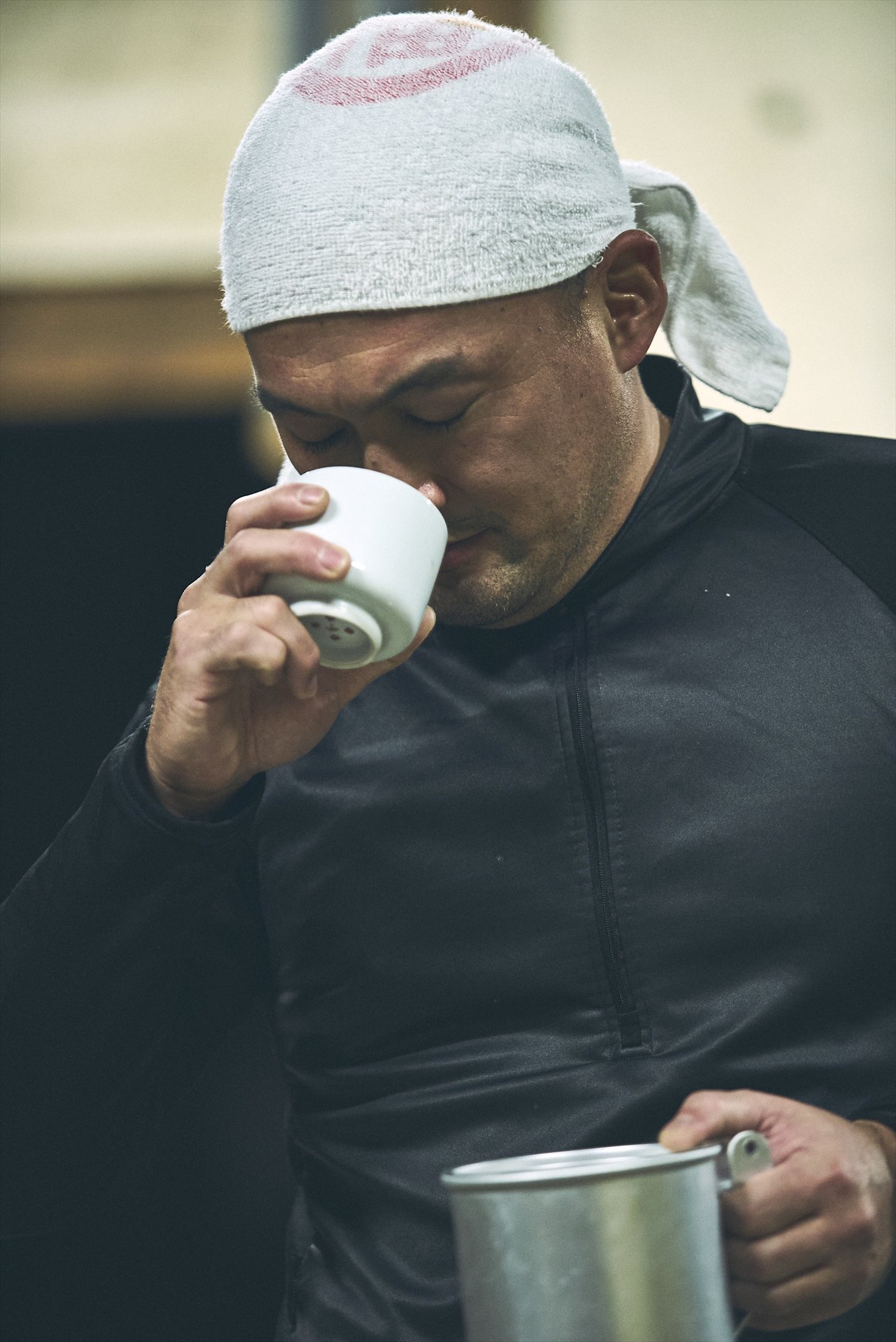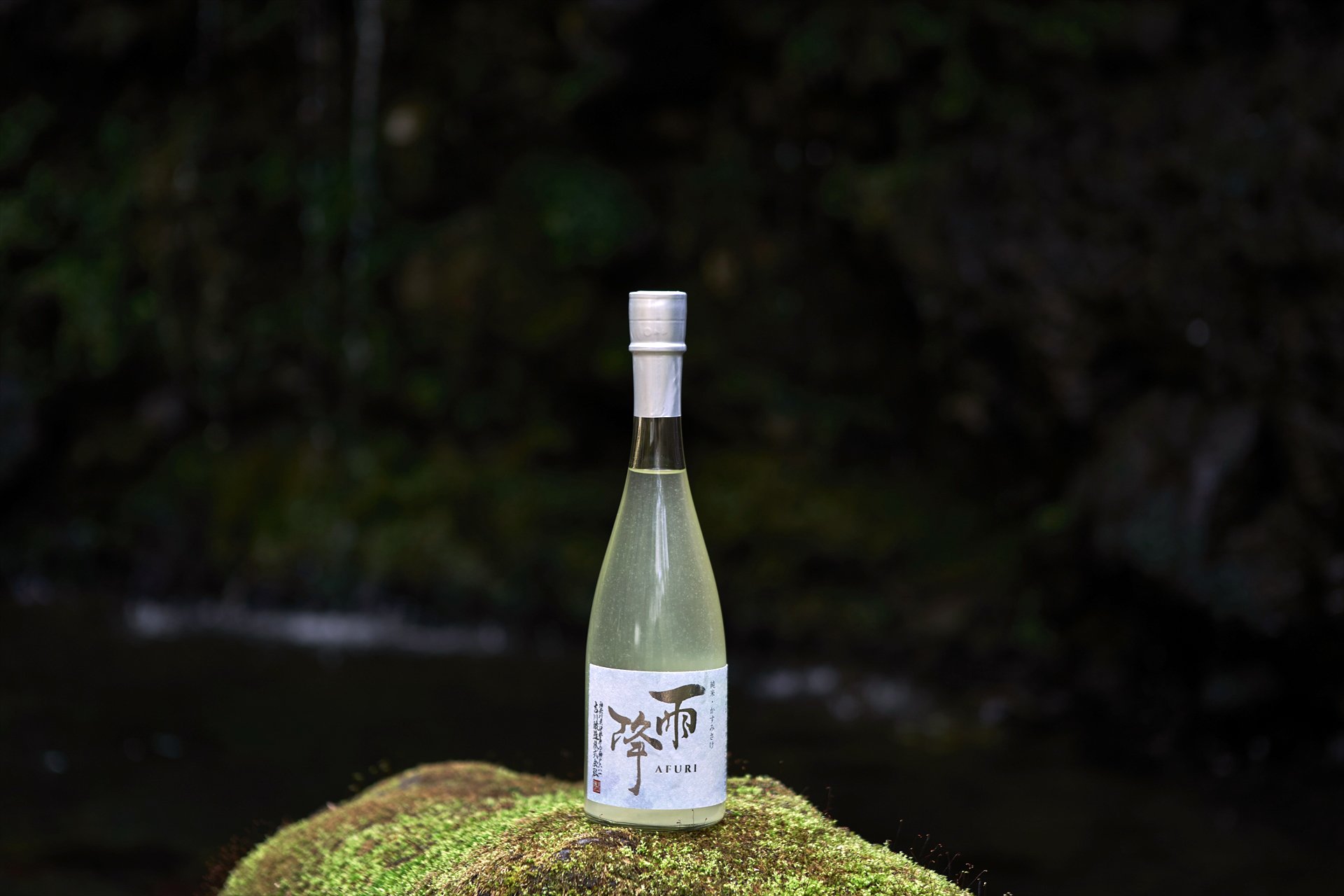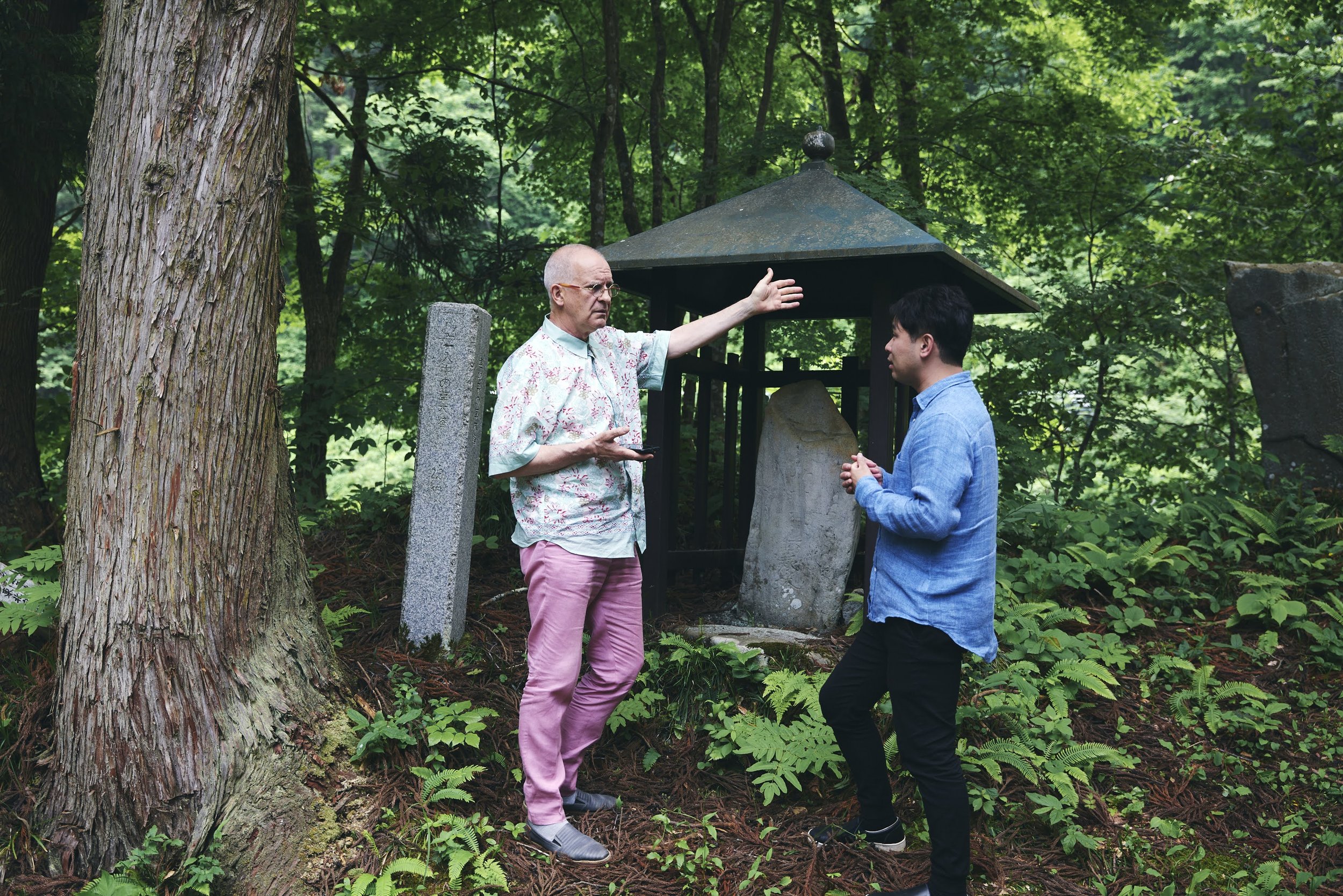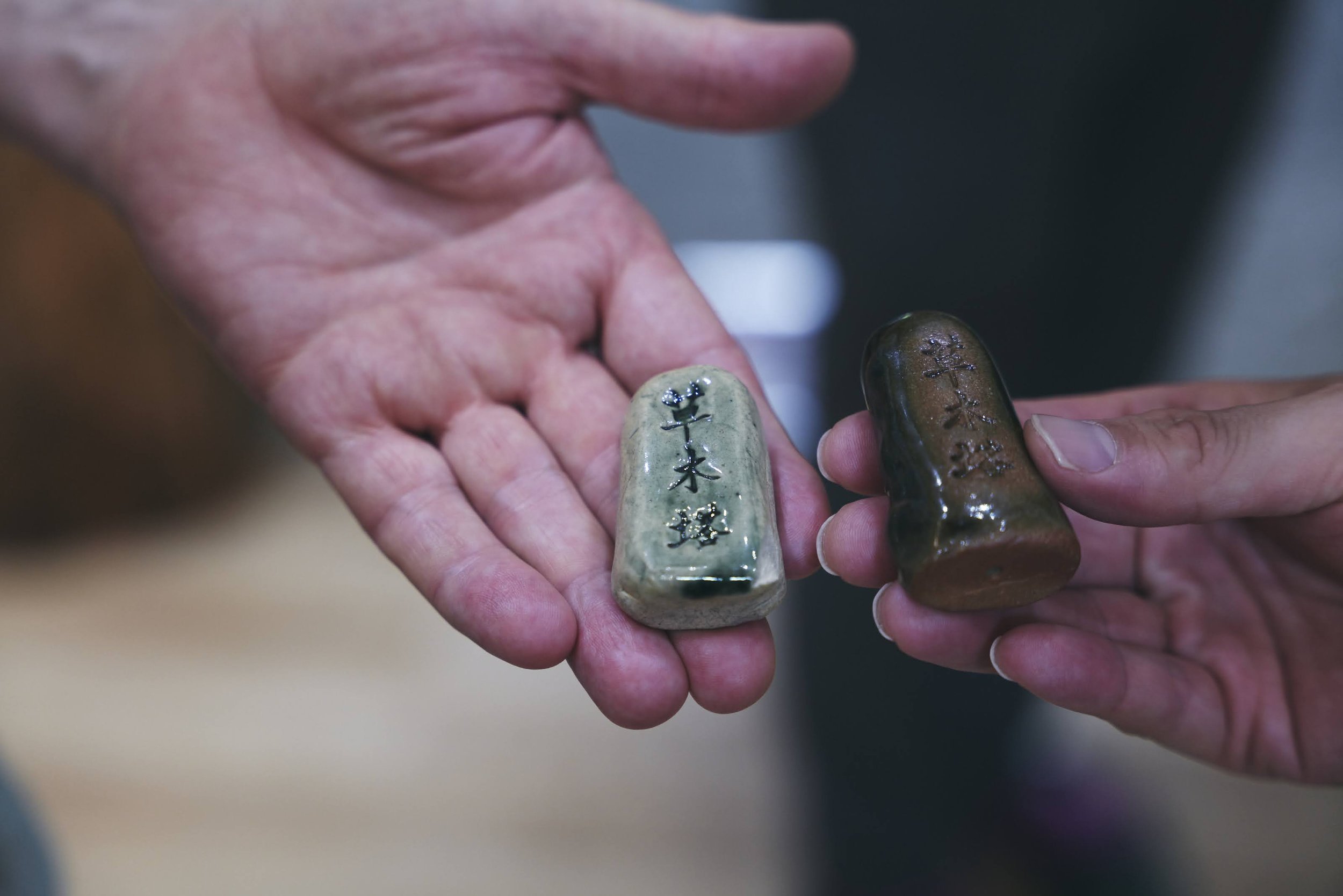Yonezawa Artistry
Legacy and vision. Two words that describe and drive Gentaro Nitta’s Nitta Textile Arts and Michiko Yamakuchi’s Yozando. Both are eminent textile enterprises based in Yonezawa City, Yamagata Prefecture, and manifest a celebration of the past as the industry looks toward the future.
Local textiles reflect a passion to create and determination to preserve
Formal kimono safflower with luxurious crimson hue. Photo: Nitta Fabric Art Inc.
Legacy and vision. Two words that describe and drive Gentaro Nitta’s Nitta Textile Arts and Michiko Yamakuchi’s Yozando. Both are eminent textile enterprises based in Yonezawa City, Yamagata Prefecture, and manifest a celebration of the past as the industry looks toward the future.
Nitta Textile Art Inc.
To fifth-generation head Gentaro Nitta, “the past is not a burden, but a window.” Nitta Textile Art’s forward-thinking production model triumphantly draws on the past to produce one-of-a-kind, hand-crafted elegance made from the highest quality silk, woven on wooden looms by local experts employing skills passed down for centuries. These silk masterpieces, painstakingly colored with locally sourced dyes made from hand-picked safflowers, radiate colors ranging from the subtlest hues of pearl to the company’s renowned shades of crimson.
It’s not that Nitta’s traditions—its safflower cultivation and silk dyeing techniques—are separate processes; rather the agricultural and artistic traditions merge to form an integrated whole, developed together over centuries and applied organically and harmoniously in response to the land and local climate.
Conditions, Nitta explains, change throughout the year, according to the season. In sum, the human arts—be they agricultural or artistic—depend on and reflect the demands of the land and the challenges of the climate.
The Yoneori Komon range includes a wide variety of products with seasonal as well as traditional designs. Photo: Yamakuchi Orimono Yozando
Yamakuchi Orimono Yozando
Designer, proprietress, and curator Michiko Yamakuchi leads a whirlwind tour of her multiple facilities, including a quaint retail shop, coffee-house art gallery, and petite cabin that houses her coffee bean roasting ovens. An extraordinary manufacturing site reveals the enormous Japanese-Italian weaving machines which bring Michiko’s designs to life, while a cavernous art gallery houses art pieces by internationally recognized artist Hideo Yamakuchi.
Michiko’s creativity is manifest in the intricate, unbroken patterns of her seasonal designs (shown above), be they purses, handbags, tablemats, coasters, or traditional furoshiki wrapping cloths. The seamless patterns echo the finest, perfectly aligned wallpapers.
Colors and designs are abundant and change with the seasons; winter holiday products are currently on view. Items are reversible—for example, red on white on one side, white on red on the other.
Most other products affirm the designer’s emphasis on a practical aesthetic that instills beauty in everyday objects, such as bags for smartphones and temple diaries, and by using washable cotton fabrics and creating designs that reduce leftover materials.
Together, Nitta Textile Art and Yamakuchi Orimono Yozando provide a window not only into Yonezawa’s artistic past but also its future.
From Mist to Medals
Just over an hour by train from Shinjuku, the Godo area of Isehara, Kanagawa Prefecture, lives up to its name, which means “gate of the gods.” The mists rising from nearby Sagami Bay often shroud the peak in mysterious clouds, leading to the nickname Afuri-yama (Mount Rainfall). And tucked away in the lush foothills is Kikkawa Jozo, a century-old sake brewery that is gaining international acclaim.
Kikkawa Brewery is innovating its way to international gold
Mount Oyama, part of the Tanzawa Mountains, is one of Japan’s most sacred mountains. And tucked away in its lush foothills is Kikkawa Jozo, a century-old sake brewery that is gaining international acclaim.
Just over an hour by train from Shinjuku, the Godo area of Isehara, Kanagawa Prefecture, lives up to its name, which means “gate of the gods.” The mists rising from nearby Sagami Bay often shroud the peak in mysterious clouds, leading to the nickname Afuri-yama (Mount Rainfall).
Abundant rain filters through the rock and becomes the groundwater from which Kikkawa draws to make its sake and instill it with a rich flavor and full aroma.
For six generations, the Kikkawa family has worked its magic. Since the founding of the brewery in 1912, a long line of artisans has been combining the area’s clear water and top-quality rice to create their sake, Kikuyu.
However, in 2020, things were looking bleak. Facing bankruptcy and with no one to take over, it seemed that the sake brewery’s proud tradition was at an end.
Fortunately, the Shimada Group swept in, taking the brewery under its wing and providing a rather unusual kuramoto (brewery owner)—former architect Norimichi Goto—to lead the way. “I aimed for the sky by designing skyscrapers, but now, instead, I am diving into the deep ocean of sake-making traditions, which is very rewarding,” Goto said.
His first months on the job were not easy. “I walked into a rough situation. The brewery was on the brink of closing,” Goto recalls. “They hadn’t even ordered rice for the next season; that’s how dire things were.”
Left: Oyama Afuri Shrine (Photo: Kunihiko Meguro, Shinto Priest of Oyama Afuri Shrine)
Center: Kikkawa toji Masanori Mizuno • Right: Kikkawa Afuri sake
But he soon came to realize the strength of the brewery’s traditions and connections to the Isehara community. And he was impressed by how the toji (master brewer), Masanori Mizuno, and his team refused to abandon ship.
“I was so deeply touched that they stayed, and it is thanks to their hard work, and the support from the community and Oyama Afuri Shrine, that we got things running again so quickly,” Goto said.
While Kikkawa is still producing the locally beloved Kikuyu brand, with the change in leadership in spring of 2021 came a new brand, Afuri. Despite being new, the Afuri brews have already received gold medals at multiple world-class sake competitions. Nari, a refined junmai daiginjo, even won the Platinum Award at the prestigious Kura Master competition in 2022 in Paris.
“We want to push the boundaries of sake, creating new varieties and bringing our products to new markets, to share the culture of sake with as many people as possible,” Goto shared.
This includes combining traditional processes with innovations that allow the brewing process to be more sustainable, such as reducing waste by only polishing away 10 percent of the rice surface or switching from oil-powered steamers to more efficient electric ones.
For those interested in trying Kikkawa’s new generation of brews, why not sample Rosy-Kasumi, a low-alcohol sake (just eight percent) that is gaining attention for its beautiful, fresh flavor. The use of an unusual pink yeast gives several of the Afuri varieties, such as the floral ‘Ohana, a festive, rose-hued tinge. More expert sake drinkers will be enthralled by Terra/Y, another Kura Master gold medalist made using minimally polished rice and slowly aged at low temperatures for an elegantly sweet finish.
This is definitely a brewery to watch.
Learn more about Kikkawa:
www.kikkawa-jozo.com/en/
Plants and Trees
A stone monument, two or three feet tall, with a simple inscription stood before me. It read: “plants and trees.” Somokuto, as they are known in Japanese, are monuments concentrated mainly in Okitama, a region in southern Yamagata Prefecture in Tohoku, the northern part of Japan’s main island of Honshu. Adam Fulford shares more.
Finding the true nature of somokuto in Yonezawa
A somokuto monument inscribed with the Chinese characters for “plants and trees” stands in a forest on the outskirts of Yonezawa City. (Photo: Plat Yonezawa)
A stone monument, two or three feet tall, with a simple inscription stood before me. It read: “plants and trees.” Somokuto, as they are known in Japanese, are monuments concentrated mainly in Okitama, a region in southern Yamagata Prefecture in Tohoku, the northern part of Japan’s main island of Honshu.
I first became aware of somokuto in 2014, when I visited the small community of Nakatsugawa, in the town of Iide, also in Yamagata. I was there as a judge in a national beautiful village contest, and my hosts felt that somokuto might interest visitors.
I was certainly intrigued. Although the phrase somoku (plants and trees) occurs in Buddhist sutras, I was told that the stone monuments were erected by members of the local community, mostly in centuries past and without the direct involvement of shrine or temple representatives.
But for what purpose? At the time, relatively little information was available about somokuto online, but I interpreted them in my own way, as an opportunity to say “please” or “thank you” when entering or leaving the forest.
Later, I became a community consultant in Iide and started to consider the souvenir potential of somokuto. Under the guidance of a local pottery instructor, I made several batches of ceramic mini-somokuto.
With his help, I also made a batch with a group at Denden, a facility in Iide for those with intellectual disabilities.
But I still knew little about the origins of somokuto. And so, when Ruth Jarman of Jarman International invited me to Yonezawa to spend an afternoon learning about somokuto with Yohei Sano, an expert on the subject, I leaped at the chance.
Left: The oldest somokuto in Yamagata dates back to 1780 and is found in the Tazawa district of Yonezawa City.
Right: Ceramic mini-somokuto produced by Denden in Iide Town. (Photos: Plat Yonezawa)
Sano and I went first to Shiojidaira, the site of a once-thriving logging community in the Tazawa district of Yonezawa. Here, I saw the oldest of the 140 somokuto in Yamagata (there are only about 20 elsewhere in Japan). It dates back to 1780.
In those days, the forests of Shiojidaira were a source of “official” firewood and timber for Yozan Uesugi (1751–1822), a famous local lord whose later admirers would include US President John F. Kennedy. After Uesugi’s large mansion in Edo (now Tokyo) burned to the ground in 1772, timber from Shiojidaira would have been used to rebuild it. A few years later, more would have been needed after a big fire in Yonezawa.
For the people of Shiojidaira, a bare mountainside must have been shocking. Have we done something unforgivable? Anxious thoughts of this kind may have culminated in the erection of the first somokuto as a requiem, perhaps, for lost greenery.
Sano explained that, as the years went by, interpretations of somokuto began to shift. They came to be seen as an opportunity to express gratitude to the forest, and later as a reminder to safeguard nature.
My own view of somokuto may be somewhat out of sync with their true nature, but if I’d never encountered them, I wouldn’t have had the chance to get to know Sano, an ideal recipient of the small gift that I gratefully presented to him: a mini-somokuto from Denden.
Spirit of Yozan
The death of a close friend at college prompted Tohoku native Hiroaki Miyajima to pursue a career in advertising in the United States. Having returned to his hometown of Yonezawa, Yamagata Prefecture, in 2011, he is now part of a local business collective whose mission is to secure the town’s future prosperity. The Ukogi collective, established by Miyajima and several other Kojokan graduates, channels the spirit of Yozan in a bid to grapple with the issues facing Yonezawa and many of Japan’s rural areas.
How a samurai reformer inspires a new generation to take the lead and succeed
Listen to this story:
The death of a close friend at college prompted Tohoku native Hiroaki Miyajima to pursue a career in advertising in the United States. Having returned to his hometown of Yonezawa, Yamagata Prefecture, in 2011, he is now part of a local business collective whose mission is to secure the town’s future prosperity.
Place of Inspiration
Those not familiar with the Tohoku region, in the far north of Japan’s main island of Honshu, may be excused for being unaware of Yonezawa. But this landlocked town has inspired some of the nation’s most successful executives and one of the United States’ best-loved presidents. When John F. Kennedy was asked after his inauguration to name a Japanese figure whom he respected, to the surprise of the Japanese press corps he answered with the name Yozan, a clan leader who ruled the domain of Yonezawa during the 18th century.
Yozan Uesugi inherited a Yonezawa impoverished by profligate leaders and entrenched interests. Heavily influenced by his teacher, Heishu Hosoi, who saw it as the duty of rulers to put the interests of their domains above their own, Yozan swore an oath to restore the prosperity of Yonezawa and its people. He is highly admired for his radical economic reforms and being an exemplar of frugality.
In Yonezawa, the figure of Yozan looms large, and in no place more so than Kojokan High School, which he founded in 1776. The school seeks to instill a sense of service and importance of action summed up by one of Yozan’s most famous sayings: “For all things, try and you will succeed; do not try and you will not succeed. Lack of success is merely due to lack of trying.”
Intellectual Foundation
The Ukogi collective, established by Miyajima and several other Kojokan graduates, channels the spirit of Yozan in a bid to grapple with the issues facing Yonezawa and many of Japan’s rural areas. The name Ukogi is that of a deciduous shrub that Yozan promoted for use in making hedgerows, while the edible leaves can serve as a food source in times of famine. Use of the shrub symbolizes the importance of creative thinking and self-reliance, which Yozan stressed to his people.
Collective member Yohei Sano, who helps with the family fish market, has a background in legal philosophy and studies local history in his free time. Known as The Professor, he is a quiet contrast to the ebullient Miyajima and provides Ukogi’s intellectual foundation. Synthesizing the virtues and lessons of the past, he is developing the philosophy of a restoration based on sustainable development and employing public–private sector cooperation. Put simply, Sano said, “I want to make Yonezawa a place to which the next generation will want to return and make their life.”
The speed of change in Japan can often be glacial, but Yozan overcame the powerful social and economic forces of the 18th century to restore the prosperity of Yonezawa. Ukogi is aiming to instigate a second restoration and make Yonezawa a place that once again inspires beyond its borders.
Of Sake and Scythe Weasels
On November 4, 2021, an evening of culture, flavors, and learning took place at Kojima Sohonten Co., Ltd., Japan’s 13th-oldest sake brewery, established in 1597. Located in Yonezawa, Yamagata Prefecture, Kojima Sohonten is best known for its award-winning Toko sake. When you’re inside the brewery, the dedication and craftsmanship of more than 400 years of brewing seem to infuse the darkened wood of the huge barrels. On this day, however, amid the ongoing travel restrictions, it was innovation—along with multiple cameras—that helped bring the historical setting to travel writers on the east coast of the United States.
A surprising view of Tohoku with Alex Kerr and John Gauntner
Listen to this story:
On November 4, an evening of culture, flavors, and learning took place at Kojima Sohonten Co., Ltd., Japan’s 13th-oldest sake brewery, established in 1597. Located in Yonezawa, Yamagata Prefecture, Kojima Sohonten is best known for its award-winning Toko sake. When you’re inside the brewery, the dedication and craftsmanship of more than 400 years of brewing seem to infuse the darkened wood of the huge barrels. On this day, however, amid the ongoing travel restrictions, it was innovation—along with multiple cameras—that helped bring the historical setting to travel writers on the east coast of the United States.
Jarman International KK proposed the special webinar as a way to satisfy the wanderlust of frustrated Japan lovers overseas. We used our Covid-induced thinking time to bring together sake expert John Gauntner and author Alex Kerr to speak about what makes the Tohoku region so culturally distinct. The event was hosted by the Japan National Tourism Organization’s New York office and co-produced with JR East Marketing & Communications, Inc., known as JEKI.
Flavorful Culture
What better way to connect with viewers than to send delicious sake to each, along with recipes which perfectly match the various brews? Perhaps having Gauntner and Kerr intertwine the story of Tohoku with an engaging discussion about sake flavor profiles and bouquets?
The evening proved to be the perfect appetizer for the travel boom we expect will hit next spring. Gauntner taught participants how to properly heat and taste sake, suggested pairings for various cuisines, and vividly showed how the flavor profile of each bottle is deeply connected to the region, its rice, and the craftsmanship.
Lost Japan author Kerr brought to life the mystical side of Tohoku. Do you know what bait to use to catch a kappa (river sprite) in Iwate? Have you heard the chilling tale of the kamaitachi (scythe weasel)?
Travel Preview
Tohoku is also filled with beautiful hamlets, forgotten by time, and is home to some of the few remaining views of old Japan, such as the now-rare red pines and the last surviving garden of the Heian Period (794–1185). As people around the world connect with Tohoku through innovative online events, we expect more travelers to follow the lead of Dr. Edwin O. Reischauer, former US Ambassador to Japan, and venture to the “other side of the mountain.” Tohoku is the cradle of Japanese civilization, and is sure to wow any visitor with colorful festivals, thatched villages, folklore, and, of course, plenty of wonderful sake.
Investing in Kochi Prefecture
For most, investing brings to mind index funds, real estate investment trusts, or property. But what about investing in the growth of your local community via beer, tourism, or fitness? In Kochi, on the island of Shikoku, three families are looking beyond plain profit as they seek to revitalize and secure the future of their communities in unexpected ways.
How three expat families are making a difference in rural Japan
Listen to this story:
For most, investing brings to mind index funds, real estate investment trusts, or property. But what about investing in the growth of your local community via beer, tourism, or fitness? In Kochi, on the island of Shikoku, three families are looking beyond plain profit as they seek to revitalize and secure the future of their communities in unexpected ways.
Fitness Fans
Violet and Carlo Pacileo decided to move to Otoyo to help Violet’s mother restore the family’s land. But the enterprising duo decided they could do more.
“Aging populations, businesses dying out, houses being abandoned … these are issues all of Japan’s rural communities are facing. But seeing the impact firsthand in Otoyo was heartbreaking,” Violet explained.
Having spent her career analyzing businesses and investment potential, Violet quickly understood that the community needed an injection of private capital. “After years working for large financial institutions, this is my chance to give back to the community.”
The Pacileos recently received approval to start building a CrossFit box, in other words a barebones gym. While the idea is unconventional, they have done their research. “Shikoku doesn’t have a box yet and the weightlifting association in Kochi told us there are only two facilities where they can drop weights—and both are in public high schools,” Violet said. “I knew then that there would be a market, and that we had to get in while the fitness industry here is still in its infancy.” She expects their new business not only to bring fitness-loving visitors to Otoyo, but also to help improve health issues in the community.
Beer Brewers
Former California residents Kenneth and Masako Mukai moved to Niyodogawa-cho to start a brewery, which opened in November 2020. Although this may seem an odd thing to do in a village of 5,000 people, the Blue Brew Taproom is already a hit.
Kenneth explained that the brewery is having multiple positive effects on the local economy. “Our local post office gets more business from us shipping our products, and the local government receives tax funds from people buying our beer through the furusato nozei program. Sales at restaurants and hotels around us have gotten a boost, as our customers often stay nearby.”
The Mukais buy locally produced items such as tea, ginger, and Satsuma-imo (sweet potatoes), which they use as flavoring, and collaborate with six farmers to grow hops, creating a new market in the community.
They have many supporters among the owners of established businesses in the area, and their positive example has also brought about changes in the village government’s perception of investment from outside. “The chiiki-okoshi kyoryoku-tai program used to be closed to non-Japanese applicants, but, in April, the first American member was accepted and moved here with his family!” Kenneth said.
Hospitality Queen and Organic Farmer
Australian Rosie Moloney and her husband, Tsuyoshi, live in the 1,481-person village of Mihara. They know well the importance of leading by example and engaging with the community.
“When I first presented my plan to start a guesthouse, many locals asked, ‘Who would want to come here?!’” Rosie explained. “People can’t see the value of what they have, and it can take someone from outside to open their eyes and show them the opportunities outside the infamous box.”
Clearly, her guests agree. Rosie now runs two highly rated guesthouses in the Shimanto area, while also engaging in permaculture and helping with Tsuyoshi’s organic rice fields.
“I see such beauty, value, and potential here,” she said. “I started guesthouses to encourage the tourism industry and create new job opportunities.”
Many of Rosie’s guests—Japanese and those from abroad—stay for several days and contribute to the village economy through visits to restaurants and shops, as well as by booking outdoor activities. According to her, “Guests often say that the fondest memories of their trip are [those of] interacting with locals.”
Learn more about Kochi: visitkochijapan.com/en






